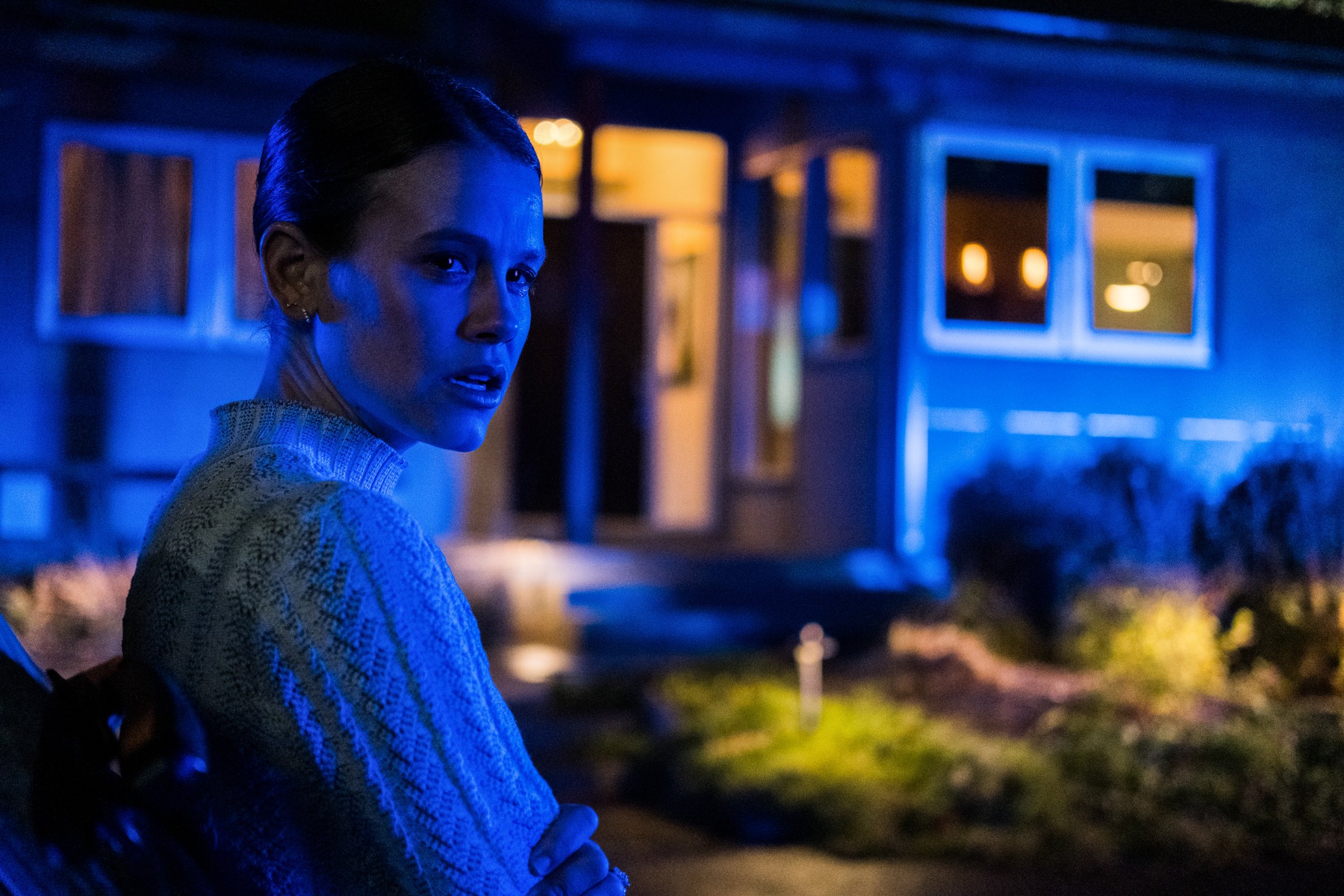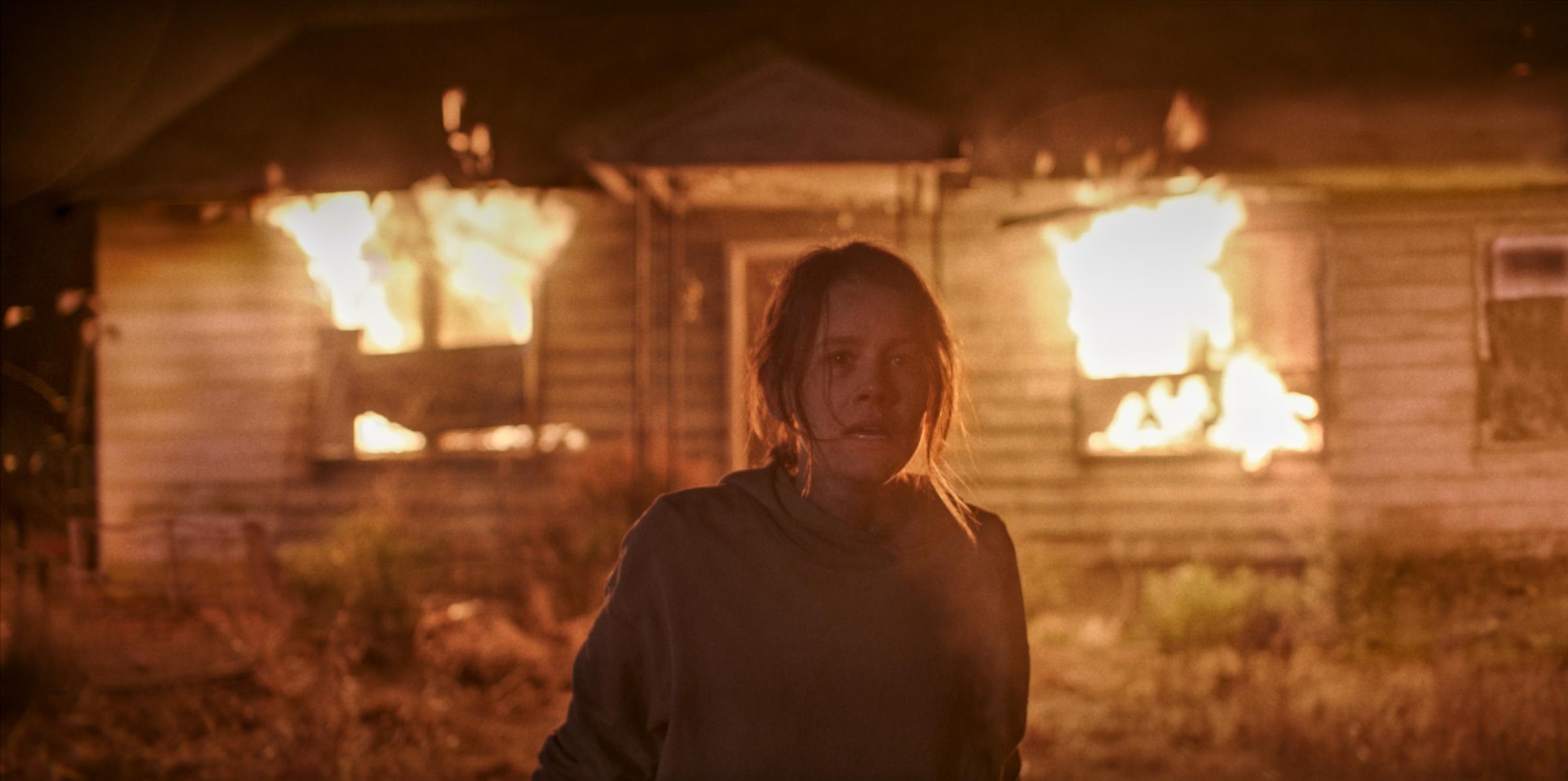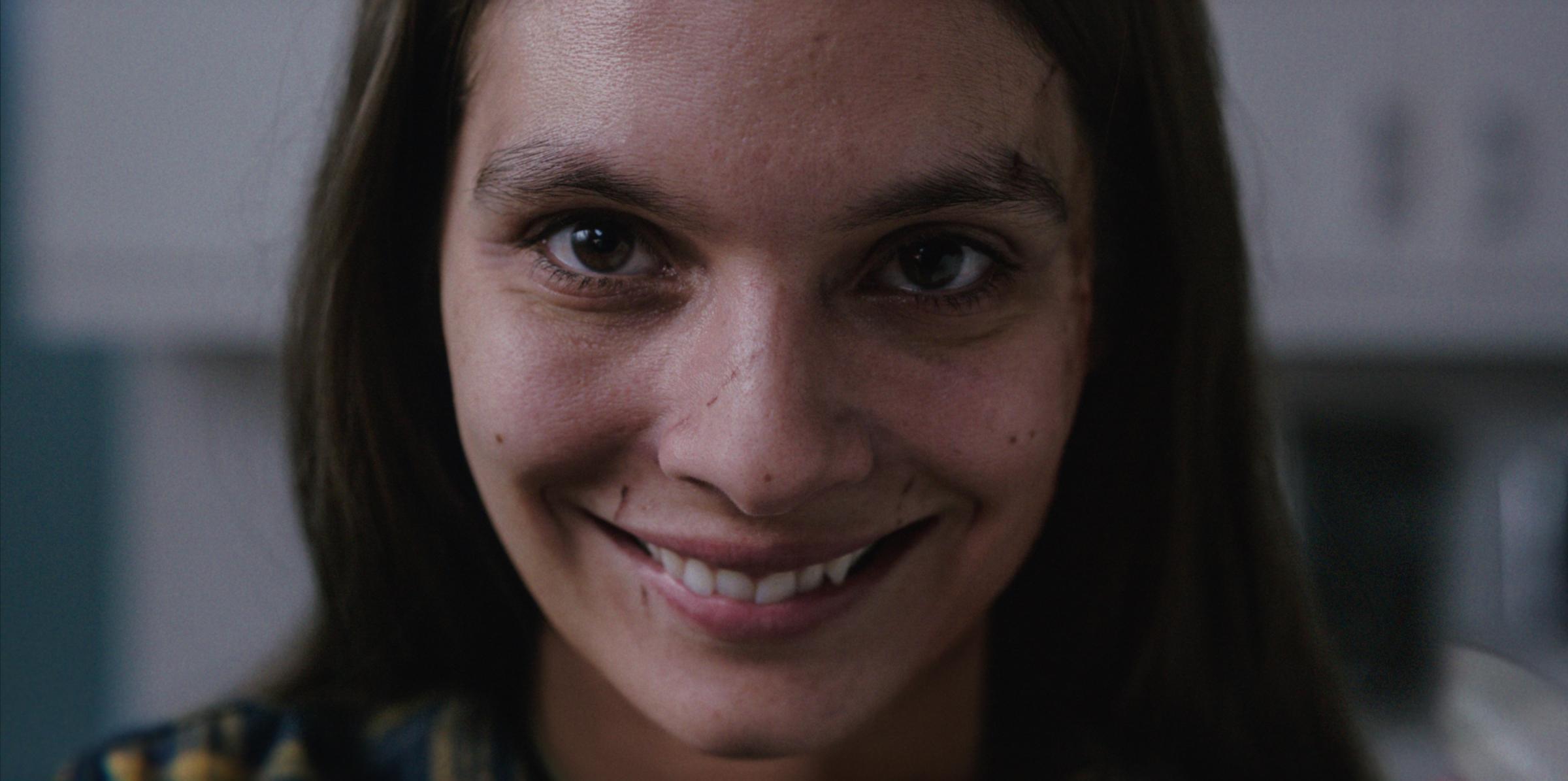
Parker Finn is a self-proclaimed “video store kid” who spent most of his time in the horror section. “What I’m always fascinated by is when a horror film can show me something that I didn’t know I was afraid of,” the writer and director of Smile tells TIME ahead of the Sept. 30 release of his debut film. As a kid, it was the “cursed chain films” such as 2002’s The Ring that introduced him to horrors that he could never imagine. But it wasn’t The Ring’s supernatural villain Samara, a stringy haired ghost girl whose vengeful spirit lives on through a cursed videotape, that scared him most. It was watching Naomi Watts’ protagonist slowly lose her mind—and her humanity—over a sinister video tape. “In my opinion, the very best horror films work as human dramas first,” he says. “I need to be invested in a character’s plight to really be scared.”
With his first full-length feature, which is inspired by his 2020 short film Laura Hasn’t Slept, Finn made a love letter to The Ring that taps into his own anxieties and fears. His onscreen proxy is clinical psychiatrist Dr. Rose Cotter (played by Sosie Bacon), who witnesses a young patient (the delightfully creepy Caitlin Stasey) gruesomely take her own life, and becomes the latest victim of a malevolent spirit with an unnerving Cheshire cat grin.
Finn began writing the film in the early days of the pandemic when he was afraid of the “indescribable thing that could be coming for me,” he says. “You know, the fear of strangers, the fear of loved ones, of transmission.” He wanted the “pass it on” horror movie to feel like an “escalating nightmare” that explores the rippling effects of trauma. The kind of pain that can’t be covered up with a smile. “I really wanted to make a movie that feels like you’re experiencing a character’s mind turning against them,” he says. Like The Ring, he also wanted it to feel like “a very strange urban legend that feels so familiar it’s like you’ve always known it on this weird existential level.”

Finn helps viewers understand Rose’s fraught mental state by using extreme close-ups that make it feel as if the walls are closing in on her as she tries to put a stop to this demonic killer. To achieve that claustrophobic feel, he looked to some of his favorite psychological thrillers for inspiration: the 1997 oppressive Japanese horror film Cure, Todd Haynes’ 1995 anxiety-inducing indie Safe, and 1968’s Rosemary’s Baby. Mia Farrow’s titular character “is constantly being gaslit and told that she’s hysterical. That she’s wrong about what she’s feeling” he says. “That was really something that affected me.” In his film, Rose’s family and co-workers are quick to ignore her fears. Instead they blame an undiagnosed mental illness for what is happening to her. (In the film, it’s revealed that Rose’s mom also struggled with mental illness.)
Smile lets the audience decide whether Rose is being haunted by a supernatural being or just the ghosts of her traumatic past. But, in some ways, it doesn’t matter; these smiling demons feel all too real to Rose. (They may also feel real to viewers since these smirking weirdos have been popping up in subway stations and at baseball games in the lead up to Smile’s release.) The smiles like a majority of the film’s effects were done practically. Not using CGI to achieve these jarringly toothy grins “lends itself to this sense of uncanny valley,” Finn says. It’s only once you realize that these exaggerated smiles are entirely human that they become all the more horrifying. (Finn admits that out of all the smiles that appear in the movie it’s Stasey’s sinister smirk, which is featured on the film’s poster, that creeps him out the most.)

Smile looks at the consequences of smiling through the pain. “Sometimes it can feel like everything’s ok. That the pain has been put to bed,” he says. “But often it creeps back, whether we want it to or not.” But the film is not intended to be a definitive commentary on grief, anxiety or trauma. Instead he hopes the audience will see a bit of themselves in Rose’s plight and therefore feel compelled to follow her down the rabbithole. “This character ends up going to these really kind of bonkers places,” he admits. “In order for that to have weight and gravity, you have to care about her. Those are the kinds of films that you end up thinking about for a long time.”
More Must-Reads from TIME
- How Donald Trump Won
- The Best Inventions of 2024
- Why Sleep Is the Key to Living Longer
- Robert Zemeckis Just Wants to Move You
- How to Break 8 Toxic Communication Habits
- Nicola Coughlan Bet on Herself—And Won
- Why Vinegar Is So Good for You
- Meet TIME's Newest Class of Next Generation Leaders
Contact us at letters@time.com